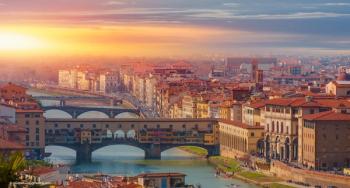
ASRS 2023: Detection of Early Diabetic Retinopathy Using OCT-A Bloodflow
Jennifer I. Lim, MD, FARVO, FASRS shares insights from her presentation on "Detection of early diabetic retinopathy using OCT-A blood flow analysis."
Jennifer I. Lim, MD, FARVO, FASRS shared insights from her presentation from ASRS 2023, titled "Detection of early diabetic retinopathy using OCT-A blood flow analysis," with our team.
Video Transcript
Editor's note - This transcript has been edited for clarity.
David Hutton:
I'm David Hutton of Ophthalmology Times. The American Society of Retina Specialists is holding its annual meeting in Seattle. At the meeting, Dr Jennifer Lim is presenting "Detection of early diabetic retinopathy using OCT-A blood flow analysis." Dr Lim thank you for joining us today to discuss this. Tell us a little bit about your presentation.
Jennifer I. Lim, MD, FARVO, FASRS:
Thank you, David, for having me today; it's always a pleasure to chat with you. Today, [I] presented the work that we did at University of Illinois in combination with our imaging faculty. And basically, we found that if you look at the OCT-A raw image, you can actually extract blood flow information. And looking at blood flow flux is actually more informative than just looking at blood vessel density.
So in the past, you know, our group as well as others have shown that blood vessel density is a way to distinguish separate stages of diabetic retinopathy from one another on the OCT-A imaging, and you can actually use AI and use blood flow density to distinguish these stages. So we actually know that the OCT-A raw image actually contains information, not just whether there is blood vessel presence or not, but rather, what is the intensity of the blood vessel presence, that is what is the flow.
So what we looked at, was looking exactly at the blood vessel flow, which others have attempted to do in the past. However, there are different variations that can change the signal, such as the pigmentation of the eye, as well as eye movements and eye blink. So we thought, why not try to normalise the blood vessel flow and create this normalised blood flow index. And basically, it's just like any other signal, there's a signal and there's a noise. So basically, what we tried to do is normalise the signal. And we showed, preliminarily in some of our work, that if you did do this, you could take images that look like the intensities were different. And after normalization, you would actually get the same blood flow index. So we felt that this was a useful measure.
So we went ahead and did this, we looked at blood vessel density, blood flow flux uncorrected, and then the normalised blood flow index by normalising the signal with regards to the noise that was present. And what we found with all of these measurements, is that if you looked at the normalise blood flow index, we could separate patients who were diabetic but had no retinopathy from patients who had no diabetes, and so essentially controls. We also found that this would work for patients with mild NPDR in comparison to controls and also patients who had diabetes without diabetic retinopathy from those who had mild NPDR from those who had diabetes without any diabetic retinopathy.
So, in contrast to blood vessel density, which could not distinguish controls from patients who had diabetes but no DR, we actually could do this with this measurement. This was also true when we looked at blood flow index alone. That is, they could not distinguish patients who were controls from patients who had diabetes, but no DR.
So in summary, we feel that this normalised blood flow index, particularly of the deep capillary plexus, was the most sensitive in distinguishing all 3 groups from each other. That is patients who are controls, from patients who have diabetes without DR, patients who are diabetic with mild NPDR, and those with NPDR from those without any NPDR. So, I think you know, going forward this may be a useful measurement and only time will tell, and further work remains to be done.
Newsletter
Get the essential updates shaping the future of pharma manufacturing and compliance—subscribe today to Pharmaceutical Technology and never miss a breakthrough.















































